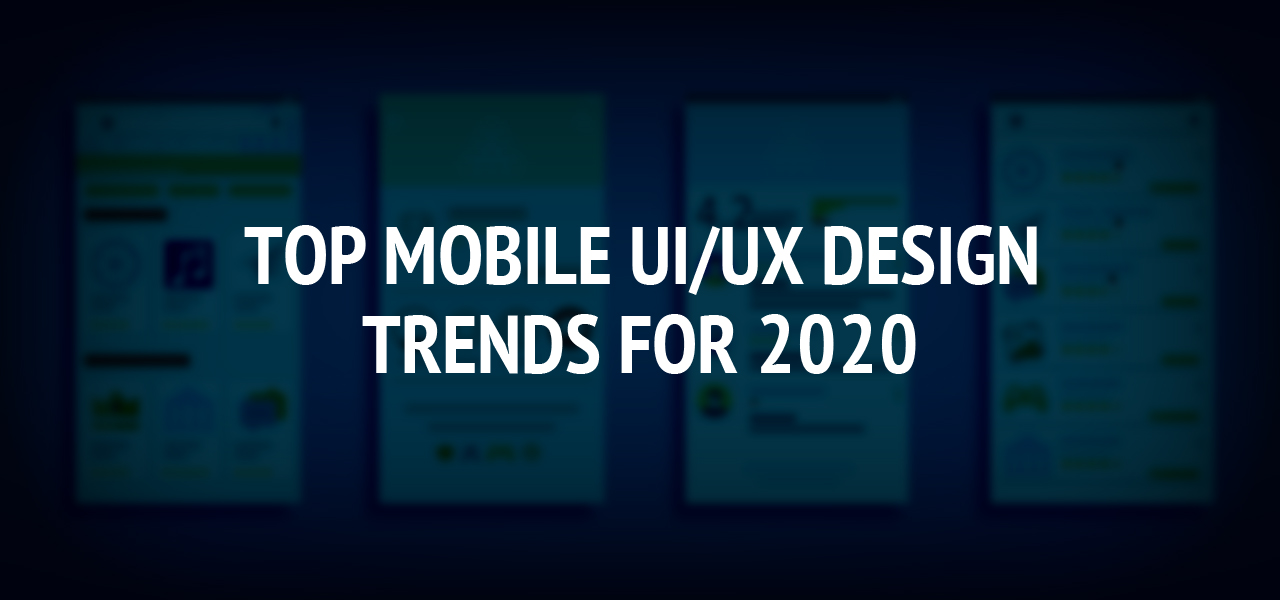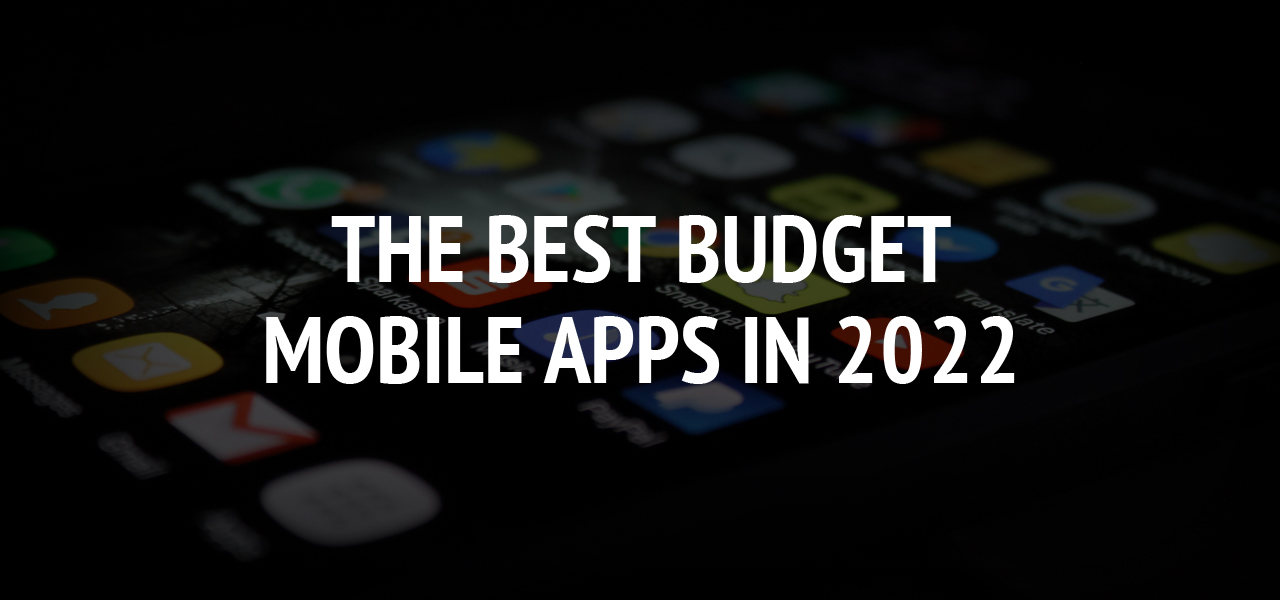Top Mobile UI/UX Design Trends for 2020

Every user forms an opinion about a mobile app the moment he/she opens it. The presentation of the options, the navigation, the UI and the UX all form an important part in luring the customer to a particular brand. This is, however, not constant. Over time new technologies are coming that are adding more fire to such applications. Today, even the best web design companies in India are turning to some lucrative trends to bring them more return on investment. So what are those trends that the mobile apps must follow in order to succeed and enjoy a better Return on Investment? Let’s have a go through over some of the top UI design trends as well as UX design trends that are going to surface in 2020.
1. Enhanced Personalization
All of us are familiar with the various personalization features available in a mobile or web app. The year 2020 is going to see more enhancements in this field. The use of today's top two technologies i.e. Machine Learning, and Artificial Intelligence is going to be seen in the development of personalization options. Our apps are going to detect our preferences using Artificial Intelligence before we even specify what we want. You might as well find an app already listing out the service/product you want through the use of Artificial Intelligence.
2. No More Rectangular Mobiles.
Gone are the days when your mobiles were rectangular (or square even). The preferred choice now is mobiles having round corners be it an Android or an iOS mobile. Rounded corners are smoother while interacting with our eyes and help to quickly process data. Since curved corners of a device are reflected in its UI design, all apps and mobile sites get a similar rounded look and feel which has a positive impact on the UX.
3. Voice Interaction.
Voice Interaction in today's computers as well as in the mobile world, does not need any introduction. Apple uses Siri, Amazon uses Alexa, Microsoft uses Cortana, Samsung uses Bixby while Google uses a common Google Assistant to interact with the UX by providing commands through speech. To the benefit of the users, these assistants are all empowered with Artificial Intelligence. Voice-powered apps are increasingly making our lives easier as they produce more practical, reliable and rapid query results, and ensure personalized user experience.
4. Authentication Methods
We have seen since the very early days of the web that authentication is required almost everywhere. The only way that was being used was by providing a username and a password. However, this method has already started to be on the decline as users are now logging into their apps (web or mobile) without providing a password. This headache of the users is being done away with. Users now have the facility to login using facial recognition, fingerprint recognition, login with social media such as Facebook or Twitter, or also make use of OTPs to authenticate the users.
5. Animation
Well, animation is no longer limited to cartoons. It is being highly used in a productive manner to present the users with various stages of a process they have to go through while making selections. With mobile devices growing stronger and faster, mobile app designers are able to produce more sophisticated animation. The animation is no longer just to bridge gaps between different conditions; it's also a branding element. While motion tells an exclusive tale about your brand and product, animation mixes things up for users by creating movie-like scenes that shift data from frame to frame.
6. Gradients
Gradients, in 2020, are making a comeback. This time, however, the gradients are used more in terms of vivid colors as backdrop. They are trying to get a direct source of light. Vibrant palette not only adds dimension and complexity to the nature of the user interface, but also renders it positive. Therefore, in terms of style, the gradients move towards simplicity and subtlety.
7. 3D and Faux-3D Design
While using 3D elements in mobile applications is not a new trend as such as it has long been used in movies and games. 3D elements evolve in standard usable apps with the advancement of computer processing power. One can add realism to mobile experiences by introducing 3D elements and Faux-3D elements in the mobile experience.
8. Liquid Swipe and Button-less Design
Real physical buttons are no longer used in every mobile phone today. By freeing up more screen spaces, product designers can make more data available to users. All the focus is on the text, while the gestures are used instead of the physical buttons. The effect of liquid swipe brings the use of the movements to the next point.
9. AR/VR.
Applying virtual reality and augmented reality technologies enables digital artificial elements to be incorporated into the real-world picture by supplying consumers with a fresh look at their everyday regime. News, travel, eCommerce, entertainment, research, mHealth, real estate, and education – these are a partial list of niches where AR and VR technology with its UI / UX can be implemented.
10. Bottom Navigation 2.0.
The days of mobile phones having small screens are gone. New, larger-display smartphones can keep more content on their displays and are good for multitasking. But a bigger screen also brings complications: large screens push the interactive elements of the design well away from the natural movement of the thumb. More apps are placing main navigation items at the bottom, as it becomes more difficult to reach the top of the screen. The bottom navigation bar has thus become an industry standard for app developers that helps users get access to the basic features of the app in a single click. In 2020 the bottom navigation bar develops into bottom sheets. They can already be found in some mobile apps. Such bottom sheets grow on a swipe-up gesture, making more available choices.
11. Chatbots UI Design
The architecture of the Chatbot UI must not simply provide data to end users. Chatbots must be easy to use and handle all types of basic language variations for the processing of each specific question – different language semance, feelings, slangs, phrases, and text structures. To enhance the UX, one needs to think about a particular set of options such as avatars, a voice that fits your brand personality, style indicators, answer buttons, and design of failed / welcome messages. The developers need to give users many ways to interact – ready-made conversation flow or free-text typing with auto-complete feature.
12. Design for Disabled People
Individuals with acute, temporary, or lifelong disabilities communicate differently with the items. Including an inclusive mindset in your design will help you create more user-friendly goods. A screen for blind people or people with low vision lets you hear UI elements and read text aloud, which provides sound input and auditory signals. Combinations of high-contrast colours, captions in audio or video content, transcripts, usable audio or video components, secure navigation, completely sensitive interface, voice input and gesture recognition technologies – these are all about first approach to accessibility.
Summarizing
The foundation stone for any good app is a user-centered UI design that carries user needs, interests, and issues. You may be an aspiring app owner or a current one looking to restructure your low-performance app. Either way, the UI design trends are best suited to the app to achieve this user-friendly interface and to incorporate. Comprehending the target audience is important-if necessary. However, using too many graphics or animations, dumbing down the consumer with needless data or over-implementing the above-mentioned mobile design trends can do more harm than good at the same time. Today's users move between two and three computers on a typical day, yet there are some frequent applications on all. Why? For what? Because the art of minimalism has been perfected by these devoted apps and it's time for you to follow the new UI design ideas.
About The Author
Related Blog
View All-
The Best Budget Mobile Apps in 2022
Budgeting is one of the most important tools that people can use to take control of their finances. A budget can help people track their income and expenses, and identify areas where they can save money. Creating a budget can be a daunting task, but there are many ...
-
Agile and DevOps
Agile is a set of methods and practices for flexible project management in different application areas, from software development to marketing strategies, in order to increase the speed of creating finished products and minimize risks through iterative execution, ...







